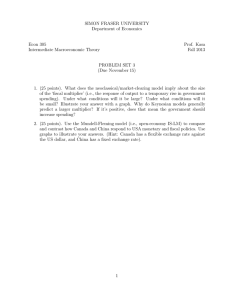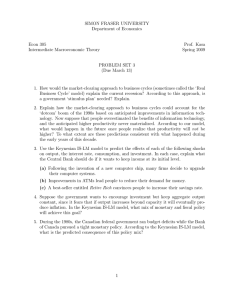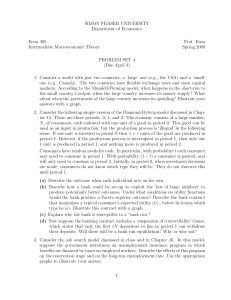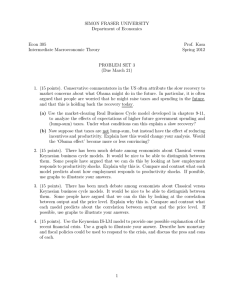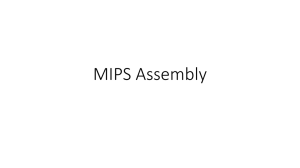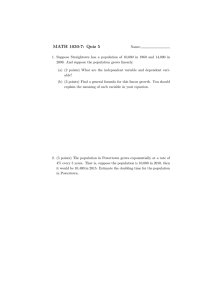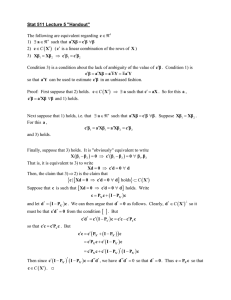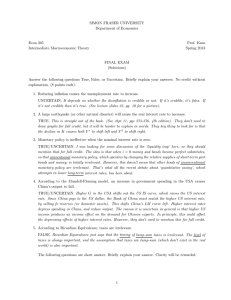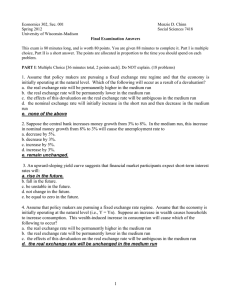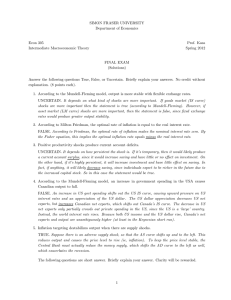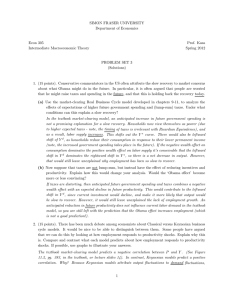SIMON FRASER UNIVERSITY Department of Economics Econ 305 Prof. Kasa
advertisement
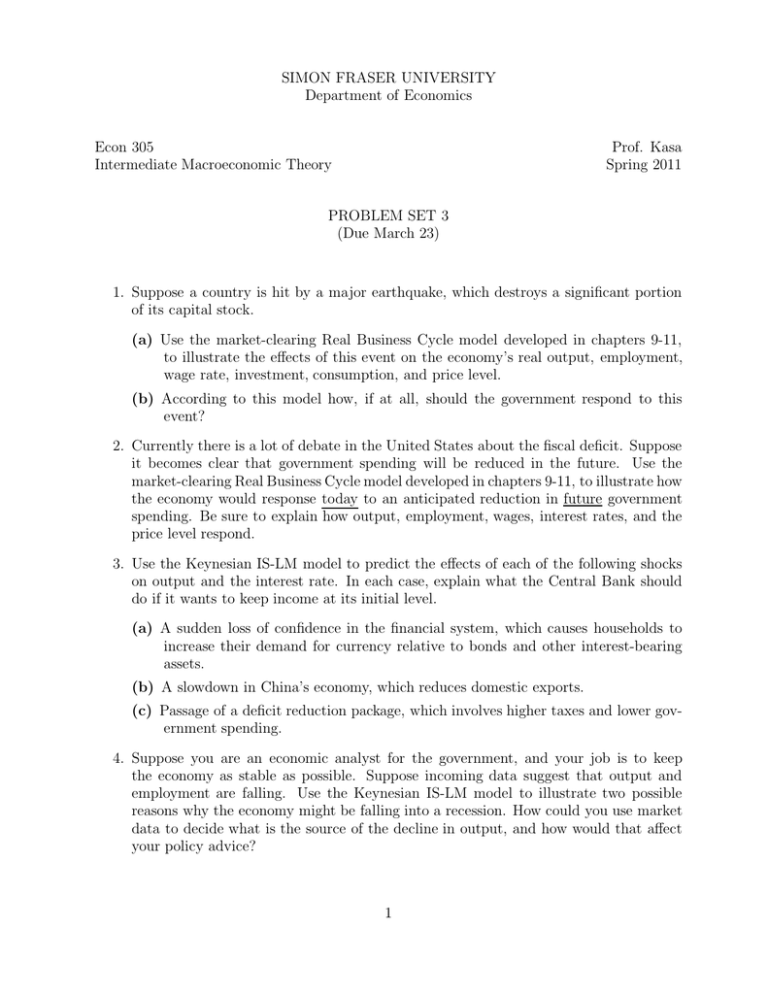
SIMON FRASER UNIVERSITY Department of Economics Econ 305 Intermediate Macroeconomic Theory Prof. Kasa Spring 2011 PROBLEM SET 3 (Due March 23) 1. Suppose a country is hit by a major earthquake, which destroys a significant portion of its capital stock. (a) Use the market-clearing Real Business Cycle model developed in chapters 9-11, to illustrate the effects of this event on the economy’s real output, employment, wage rate, investment, consumption, and price level. (b) According to this model how, if at all, should the government respond to this event? 2. Currently there is a lot of debate in the United States about the fiscal deficit. Suppose it becomes clear that government spending will be reduced in the future. Use the market-clearing Real Business Cycle model developed in chapters 9-11, to illustrate how the economy would response today to an anticipated reduction in future government spending. Be sure to explain how output, employment, wages, interest rates, and the price level respond. 3. Use the Keynesian IS-LM model to predict the effects of each of the following shocks on output and the interest rate. In each case, explain what the Central Bank should do if it wants to keep income at its initial level. (a) A sudden loss of confidence in the financial system, which causes households to increase their demand for currency relative to bonds and other interest-bearing assets. (b) A slowdown in China’s economy, which reduces domestic exports. (c) Passage of a deficit reduction package, which involves higher taxes and lower government spending. 4. Suppose you are an economic analyst for the government, and your job is to keep the economy as stable as possible. Suppose incoming data suggest that output and employment are falling. Use the Keynesian IS-LM model to illustrate two possible reasons why the economy might be falling into a recession. How could you use market data to decide what is the source of the decline in output, and how would that affect your policy advice? 1
